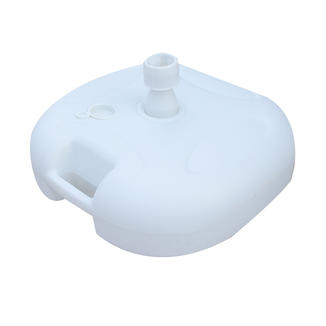As sustainability becomes a cornerstone of modern consumer choices, recycled fabric patio umbrellas have emerged as a popular alternative to traditional models. However, a critical question lingers: Can these eco-friendly options withstand the elements as effectively as their conventional counterparts?
The Science Behind Recycled Fabrics
Recycled patio umbrellas are typically made from post-consumer plastics, such as PET bottles, transformed into polyester fibers. These fibers undergo treatments to enhance UV resistance, water repellency, and tear strength. Traditional umbrellas, meanwhile, often use virgin polyester, acrylic, or cotton blends. While skeptics argue that recycled materials are inherently weaker, advancements in polymer engineering have narrowed the gap.
Independent testing by organizations like the Global Recycled Standard (GRS) reveals that high-quality recycled polyester achieves comparable tensile strength to virgin polyester. For example, a 2023 study by Textile Exchange found that recycled fabrics rated for outdoor use showed less than 10% degradation after 1,000 hours of UV exposure—a benchmark matching industry standards for traditional fabrics.
Durability in Real-World Conditions
Durability isn’t just about fabric strength; it’s about design and maintenance. Recycled umbrellas from reputable brands integrate reinforced stitching, rust-resistant frames, and coatings like Teflon to repel stains and moisture. Take the example of EcoShade, a leader in sustainable outdoor gear: Their umbrellas undergo accelerated weathering tests simulating five years of use, with results showing no significant fading or structural compromise.
Traditional umbrellas, while proven over decades, face their own vulnerabilities. Acrylic fabrics, though colorfast, can degrade faster under prolonged UV exposure if untreated. Cotton blends, while breathable, are prone to mold in humid climates. Recycled polyester, by contrast, resists mildew and UV damage by design, offering a balanced performance profile.
The Role of Consumer Perception
A lingering bias against recycled products stems from early iterations that prioritized eco-credentials over functionality. However, the market has shifted. Brands now invest in “upcycled” materials—fibers reprocessed to meet higher performance thresholds. For instance, Paraflex, a recycled fabric used by premium umbrella manufacturers, boasts a UPF 50+ rating and a 15-year warranty, rivaling top-tier traditional options.
Cost remains a consideration. Recycled umbrellas can be 10–20% pricier due to complex recycling processes. Yet, their longer lifespan—coupled with reduced environmental impact—offsets this premium for conscientious buyers.

 English
English España
España EN
EN ES
ES











